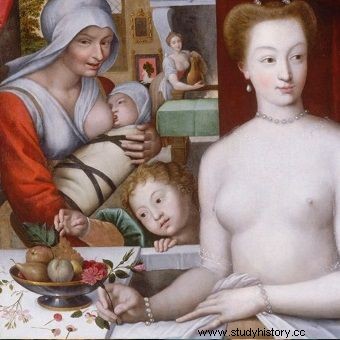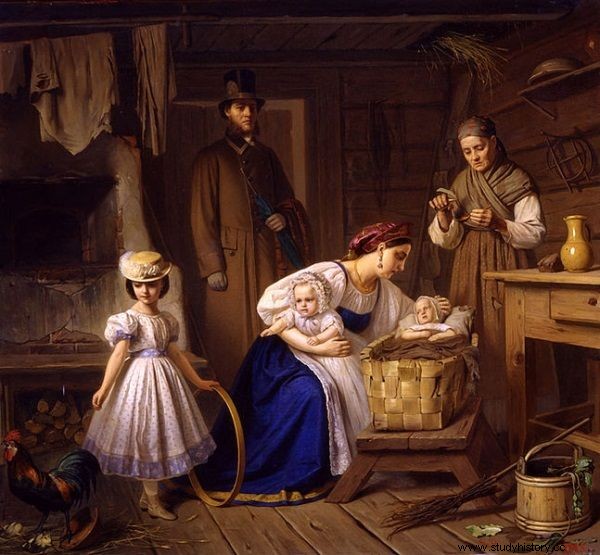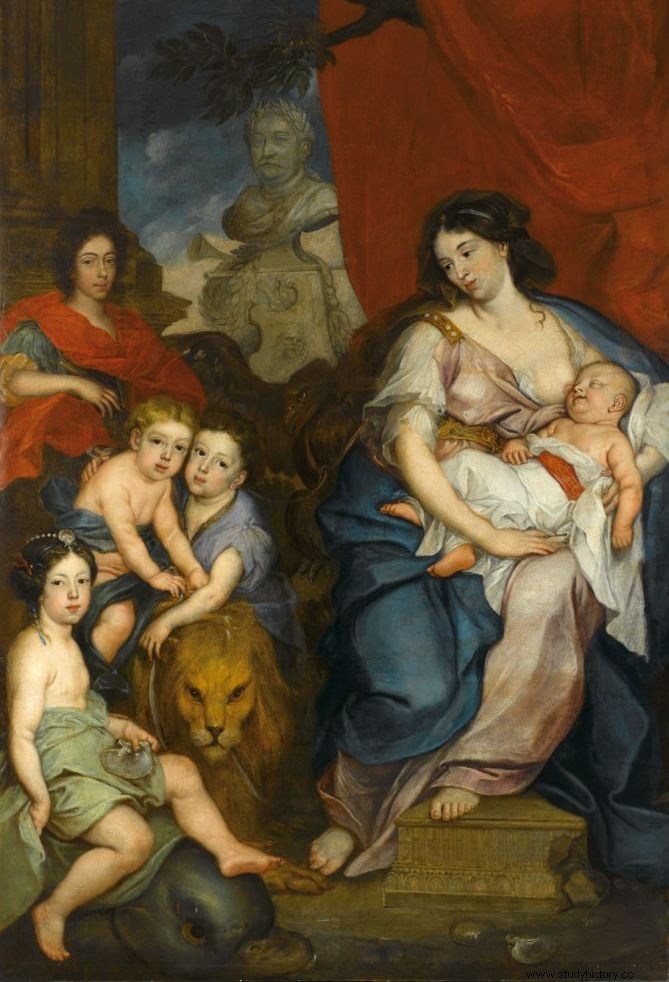Are you a fresh, proud parent? Excellent. You couldn't have come to a better place. We have great methods for you to care for your baby. You'll need sulfur, smallpox, and a little myrrh. Everything checked - 300, 400 years ago. We invite you to the next edition of the Historical School of Birth.
It is not true that 300 or 400 years ago people were right. And certainly - that it does not confuse small children. On the contrary. During the Renaissance, people were bathed two or three times a day in lukewarm water. Ideally, the bath should take place as soon as the baby wakes up.
The girls were washed in water with the addition of hazel for the first six weeks whose leaves were otherwise placed under the head. This was to ensure that the girl would have beautiful hair in the future. Cold water baths were also recommended to strengthen the baby's health.
AAA I will hire a good mum…
At a time when ready-made mixes so popular today did not exist, the only possible food for a baby was milk . Of course, it is best if it is maternal. But what if the mother was unable or unwilling to feed the baby? Then it was necessary to hire a wet nurse. And it wasn't easy at all.

The mother takes a bath, the mother feeds the baby, which is a modern model of upbringing.
It was believed that a woman between 25 and 30 years of age, who gave birth two months ago at the latest, should be chosen as a suckler. Of course, she also needed to be in good health and impeccable manners so that the baby would not suck out bad behavior along with her milk.
Often the question of manners was also extended to the ancestors. Only high-born and well-connected women were employed as nurses in ruling families and the aristocracy. It was a very lucrative profession.

A mother who managed to get into a good family left her own child to feed her employer. The picture shows a nurse visiting her own child.
As Kamil Janicki writes in the book "Ladies of the Golden Age", Queen Bona Sforza paid the noblewoman taking care of Zygmunt Augst, Ewa Łosińska, a round sum of 240 florins. Even in the best court positions it was not possible to get an equally high salary! We can safely say that in Polish history no mother has paid as much for baby milk as Bona - underlines the author (on the subject of Renaissance earnings read in our other article) .
Modern experts advised that the baby should be placed on the breast until the age of two. Mothers could not complain about earnings, but the work required considerable sacrifices. When the child was ill, medicines were to be administered along with milk, so the nurse had to take bitter infusions.
In addition, the baby, fed by another woman, had a weaker bond with its mother. However, modern educators did not bother with this. Too affectionate, "caressed" upbringing was discouraged, especially with regard to sons. Also advised against kissing children. It's unsanitary.
Don't give medications!
It is a well-known truth that children get sick often. Where do their ailments come from? Modern experts have argued that the most important cause of internal disease in young children is fever. It was thought to occur so frequently because at an early age the body density is different than it is later on and therefore heat cannot escape from the body.
Experts have also sometimes formulated opinions that are slightly more sensible. Some people realized that a child's body works differently from that of an adult. But their conclusions already gave you goose bumps. They claimed that the child should therefore not be given any medications! As you can see, in Poland, in order to get sick, you had to have horse's health.
Great war on vaccines? It was already
One of the most common childhood diseases is smallpox. It was no different a few hundred years ago, although then smallpox was much more dangerous. In addition, almost everyone who underwent it wore a souvenir in the form of characteristic scars for the rest of their lives.
Modern medics have developed a detailed recommendation for treating the youngest patients. According to them, a sick child's room should be bright, spacious and moderately warm. Cover the door with a carpet or curtain to prevent drafts. The temperature in the room should be moderate. The child should not be covered too much so as not to overheat. Moreover, it was necessary to provide him with peace and not to expose him to negative emotions.

Queen Marysieńka with children. Polish mother?
To further help the child fight the disease, popular bloodletting and cupping were used. Some also suggested piercing the smallpox vesicles to prevent scarring. The medics agreed that the patient should drink frequently. For fever, it was proposed to use a recipe that was prepared as follows:
spirit, sulfur an ounce, that is, 2 spoons and 12 spoons of protein syrup and mix, and for the poorer, barley neckline and dill alcohol [copper sulphate].
In the 18th century, a kind of vaccination against smallpox, popular in many European countries, began to be used. Although they were more like a magic ritual than modern therapy:
The child was taken to another one suffering from smallpox and asked for 5 or 7 pimples . The agreed money was put on the sick, frightened smallpox so that this matter would join the money; this money was put at the leg and they were infected with smallpox.

In wealthy families, the care of the infant was most often left to the mum, and the parents visited the baby from time to time.
Often times such a vaccination resulted in the child contracting smallpox and in many cases dying from it ... It is therefore not surprising that vaccinations were not widely adopted.
A reliable way to treat diarrhea
Diarrhea is one of the most common complaints among babies. How were they fought in the past? To alleviate the symptoms, warm compresses were made, consisting of an oil pancake, flour and egg yolk. Another poultice mixture was made of mashed cumin, anise, red rose, incense, and myrrh boiled in water or vinegar.
Another disease that plagued the children was malaria. Today, this disease is associated with Africa, but in the 16th and 18th centuries, the conditions for its spreading prevailed in the Republic of Poland. There was a special diet for childhood malaria. Milk, fish, salted and smoked meat as well as uncooked fruit and hard eggs were not to be served. A medicine that was used at least from the middle of the 17th century was quinine, known as cinema or kinkin. According to the recipe for the best-placed layers, it had to be boiled and then mixed with the orange syrup.

Is this youngster scared of the spirit and sulfur syrup?
Donkey's or goat's milk was used for tuberculosis. Runny nose was treated by rubbing the nose with butter mixed with marjoram. The cough was treated with lilac flower infusions. Many of these methods seem strange or even bizarre to us today, such as giving the baby to a mother and deliberately infecting it with smallpox. As it turns out, there is no point in condemning everyone in czambuł, because ... they are coming back. Only the appalling mortality among children and infants fortunately remains a thing of the distant past (read more on this!) .
